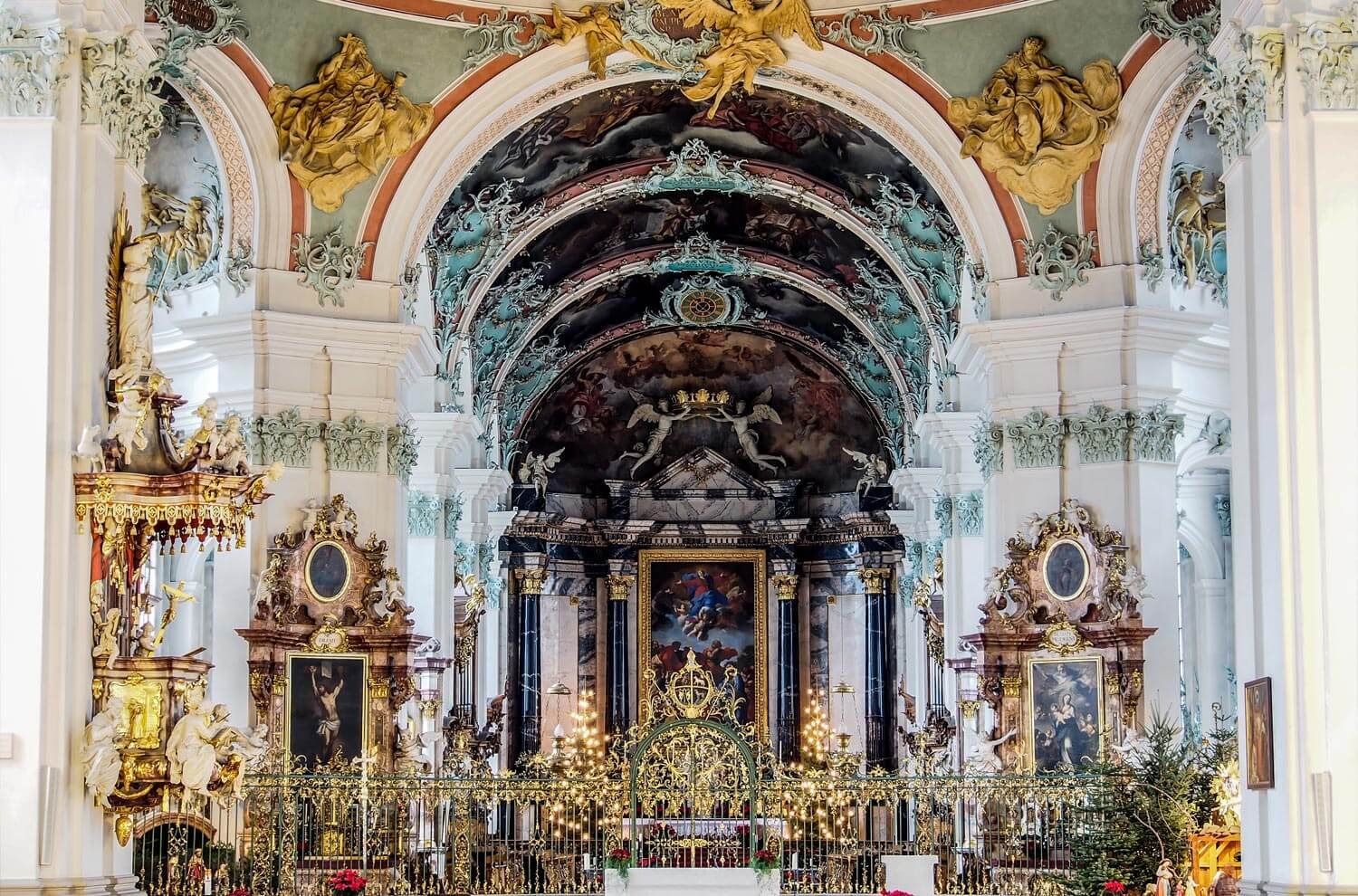Appenzell

Appenzell is the political, economic and cultural centre of Appenzell Innerrhoden, the smallest Swiss canton with a population of around 7,000. Pretty lanes and a variety of small stores and boutiques dot the car-free village. Frescoes beautify the facades of the buildings. A cross section of Appenzell’s history and culture is showcased in the Appenzell Museum in town hall.
The two sub-cantons of Appenzell, Appenzell Ausserrhoden and Appenzell Innerrhoden, are the least explored regions of Switzerland. Known for their ‘anstand’ (decorum / decency), the Appenzellers are old-fashioned and have a unique sense of humour, which will get some time getting used to though. It is also a country famous for its wide variety of cheese and locally brewed beer. Do not forget to experience them when you are in Appenzell.
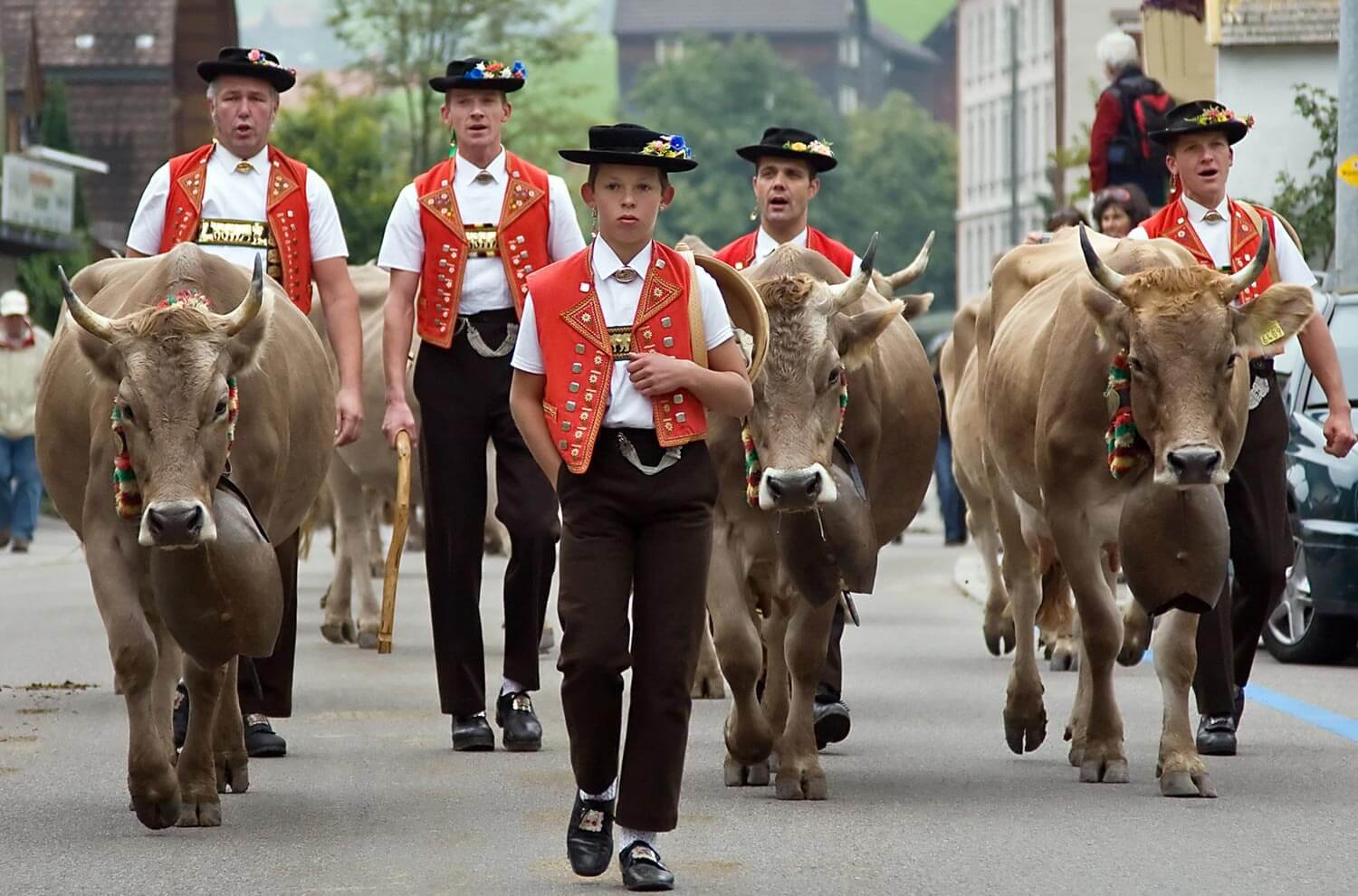
The regions is famous for its fine embroidery. Women have their hair coiffed in tulle and their dresses exhibit their exquisite embroidery skills with lace and edelweiss motif. Men wear embroidered red vests and suspenders that are decorated with edelweiss motifs or bovine figures. The Appenzell people take immense pride in their traditional dresses which could sometimes cost thousands of Swiss francs. But here, the stress is more on pride than money.
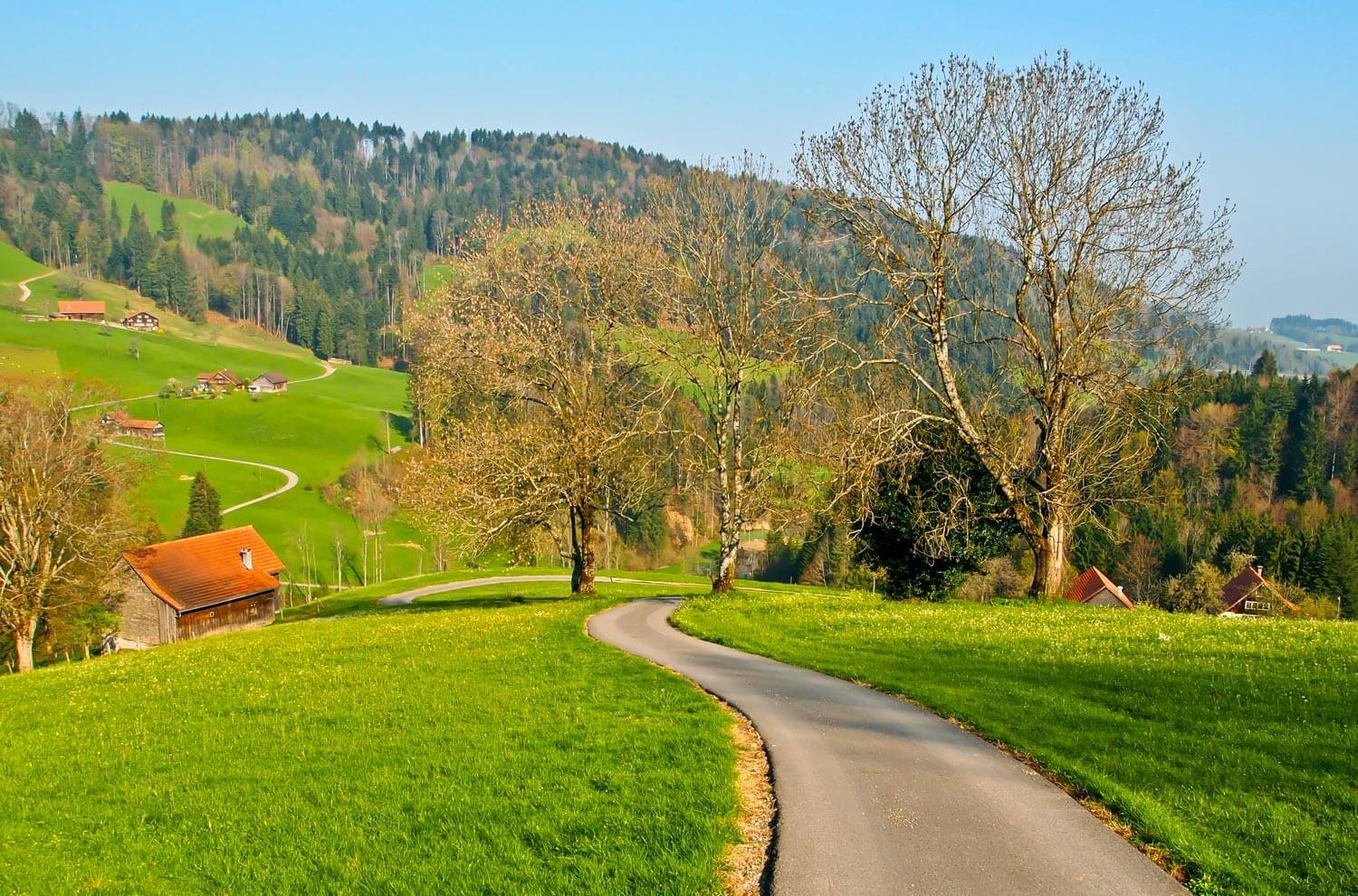
Wasserauen and the Ebenalp (1644 m) are connected by a cableway, and is the gateway to the hiking region of the Alpstein and the ‘Wildkirchli’ cave chapel that appears to hang on dramatically to the rock, and can be reached by foot in 15 minutes by walk through a gentle landscape and two caverns.
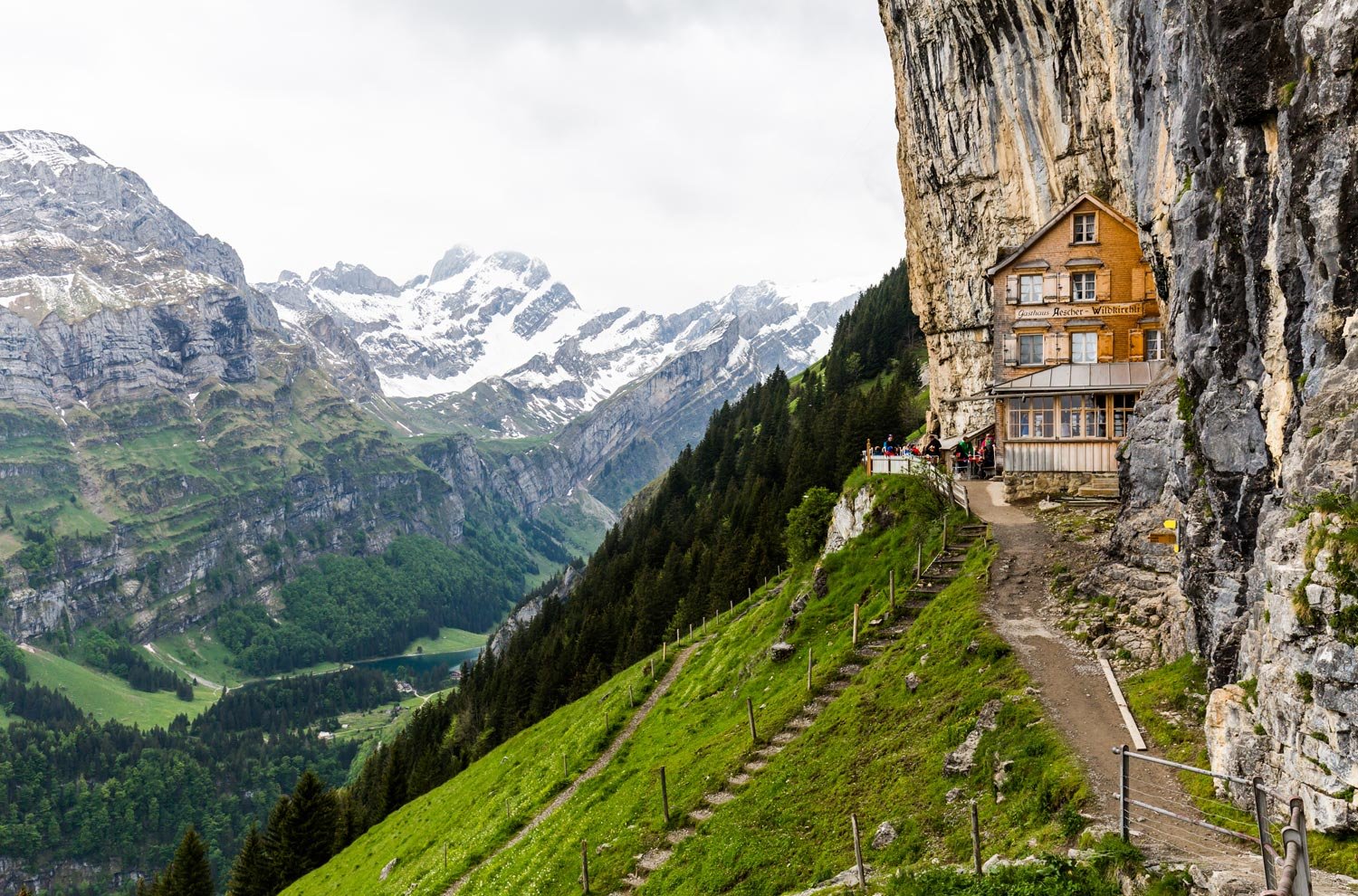
Starting from the Säntis summit, Ebenalp is a paragliding paradise too. The ascent up to this summit from Schwägalp, by cableway, is less strenuous.
Appenzell has a dense network of trekking trails including ‘experience trails’ like the barefoot trail near Gonten and the circular chapel trails, which enables you to experience nature at its most pristine and enchanting. Other walking regions in Appenzell include the Kronberg (1663 m) which can be reached by cableway from Jakobsbad, and the Hoher Kasten (1795 m) whose summit provides spectacular views of the Rhine valley.
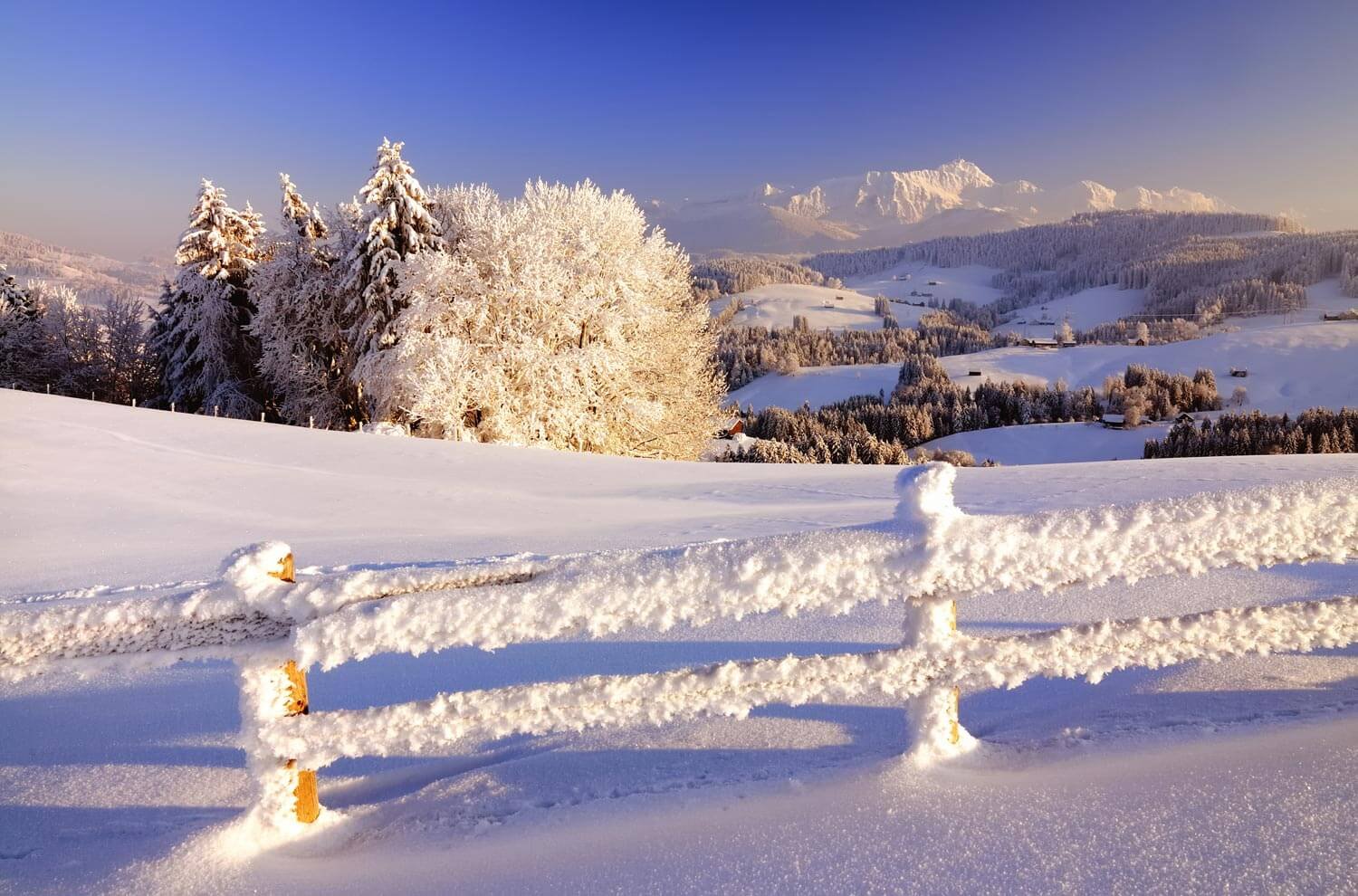
Appenzell offers a wide variety of visual and culinary feasts. Cafes, confiseries (confectionaries), restaurants, cheese shops and delicatessens, housed behind pastel-coloured façades of traditional buildings, provide a wide variety of Swiss cuisines and would be an excellent precursor to an afternoon stroll along the river.
HOW TO REACH APPENZELL
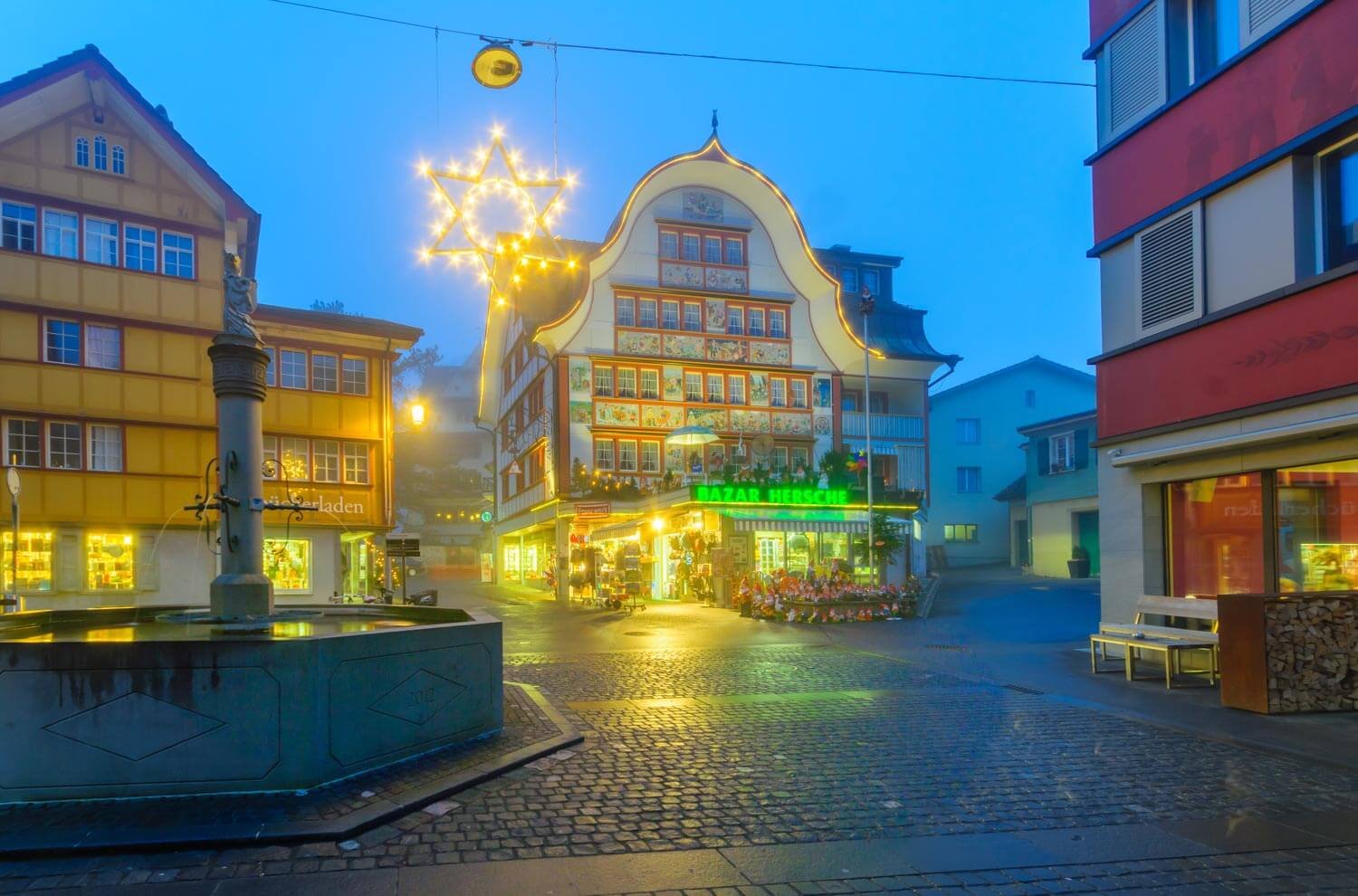
With an expansive network and frequent trains that run from Appenzell to different villages nearby, the Appenzellerbahn is the major private train company operating in the area. Buses serve those villages that are not connected by train, thus making it easier to get around by public transportation.
WHAT TO SEE IN APPENZELL
Säntis
Santis is the highest mountain in the area. From Schwägalp, a cable car runs to this mountain throughout the year. Schwägalp can be reached by car or bus from Urnäsch. The mountain is used as a starting point for hiking, during summer. Experienced skiers ski down Säntis, during winter. There is a risk of avalanches, though.
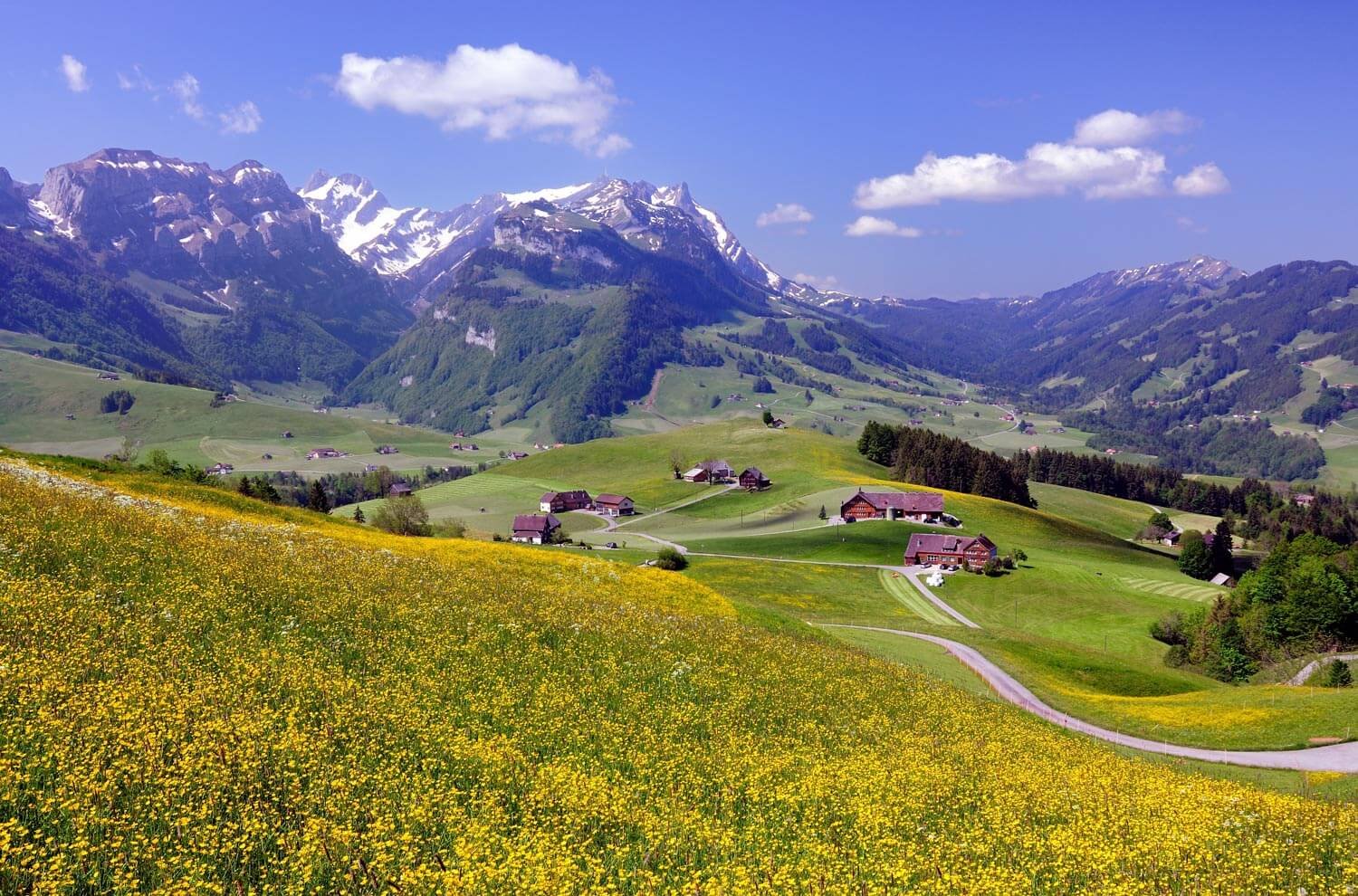
Santis has been an abode for mountaineering enthusiasts since 1846 and in the beginning of the last century a railway line to Wasserauen was laid as a part of a planned railway to the Säntis though it did not fructify and never moved beyond the village. Instead, the Säntis cableway from Schwägalp was opened in 1935.
Altitude: 2502m
Accessibility: Train to Urnäsch or Nesslau. PostBus to the Schwägalp. cable car to Säntis
View: Appenzell country, Alpstein mountains covering Lake Constance, Vorarlberg, Graubünden Alps and Bernina, Churfirsten with Tödi, Finsteraarhorn, Pilatus and Rigi, and the Mittelland covering Jura and the Black Forest.
Attractions: The surrounding mountains and valleys from the viewing platform, sunrise and sunsets, full-moon trips and overnight stays on the Säntis.
Ebenalp with “Wildkirchli”

On the Appenzell railway, the last stop is Wasserauen. From Gossau, the trains terminate here, eleven minutes after Appenzell, every half hour. Passengers can take a cable car from here.
The path from the top leads through the prehistoric, Wildkirchlicaves, which were inhabited around 40,000 years ago, and then to the hermitage and the Aescher mountain guesthouse. Stone tools of the prehistoric age were found in this area 100 years ago, proof of hunter-gatherers having lived here in the Late Stone Age (45,000 – 30,000 BC). Remains of cave bears were also found here.
Altitude: 1640m
Accessibility: Train to Appenzell and on to Wasserauen, then cable car to the Ebenalp
View: Over the Seealp and Meglisalp, Säntis, Altmann and Hoher Kasten, over Appenzell country and Lake Constance to Germany and further west to Feldberg
Attractions: Alpine garden by the Berggasthaus Ebenalp
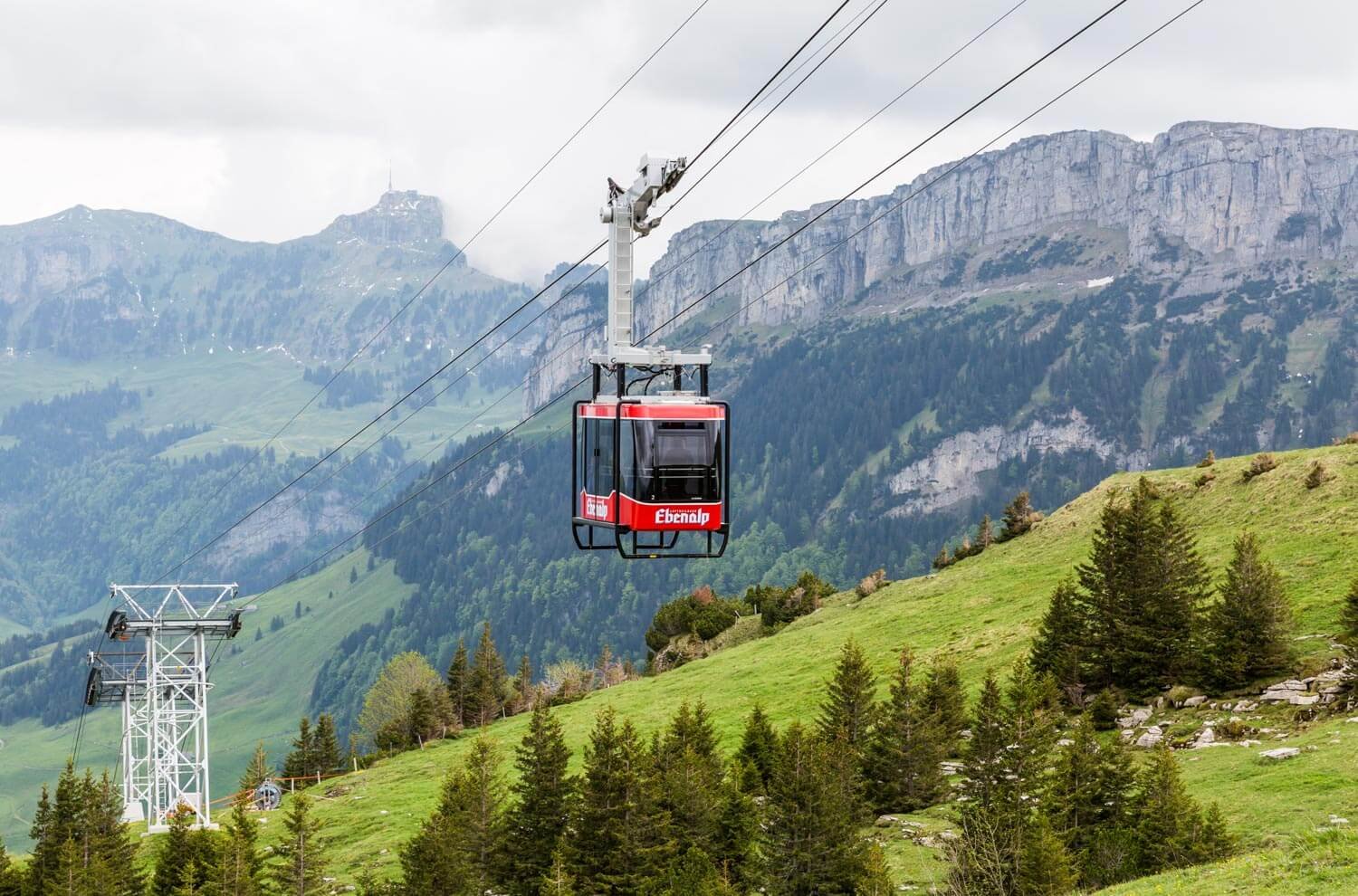
The platform between Appenzell County and the St. Gallen Rhine Valley and the ridge near Kreuzberge present an awe inspiring view. The cable car from Brülisau (bus from Weissbad) runs directly to the summit, since 1964. A sun terrace on a revolving restaurant also stands on this platform.
Altitude: 1791m
Accessibility: Bus from Weissbad (Appenzell) to the Brülisau valley station, cable car to the Hohen Kasten
View: Alpstein (Säntis), Appenzell, Rhine Valley
Attractions: Geological hiking path above the Stauberengrat, summit hike with the Alpine garden.
OTHER SUGGESTED ACTIVITIES IN APPENZELL

Schaukäserei Appenzell
Watch cheese production, free of charge! Learn how cheese is produced, how each variety of cheese taste different, and much more about cheese. There are several other events and guided tours.
Ride on the Appenzellerbahn
You can begin your ride from either Gossau or St.Gallen or anywhere within the canton Appenzell with the Appenzellerbahn.
Taking a ride on the Appenzellerbahn will help you see the Canton of Appenzell better, as it is made for narrow curves and hence slower, thus making it a perfect place to get a view of the scenery. You can have the latest timetables from Swiss train website, sbb.ch.
Visit St Gallen
